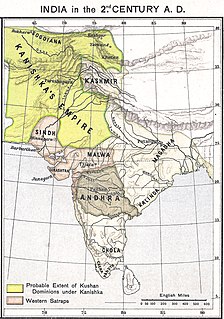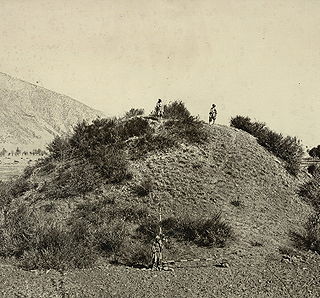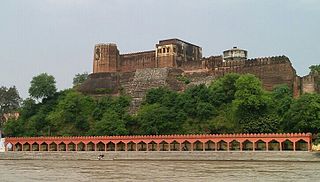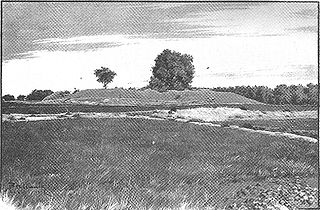
Sir Marc Aurel Stein, (Hungarian: Stein Márk Aurél; 26 November 1862 – 26 October 1943) was a Hungarian-born British archaeologist, primarily known for his explorations and archaeological discoveries in Central Asia. He was also a professor at Indian universities.

Nalanda was an ancient Mahavihara, a revered Buddhist monastery which also served as a renowned centre of learning, in the ancient kingdom of Magadha in India. The university of Nalanda obtained significant fame, prestige and relevance during ancient times, and rose to legendary status due to its contribution to the emergence of India as a great power around the fourth century. The site is located about 95 kilometres (59 mi) southeast of Patna near the city of Bihar Sharif, and was one of the greatest centres of learning in the world from the fifth century CE to c. 1200 CE. Today, it is a UNESCO World Heritage Site.

Taxila in Sanskrit is a significant archaeological site in the modern city of the same name in Punjab, Pakistan. It lies about 32 km (20 mi) north-west of Islamabad and Rawalpindi, just off the famous Grand Trunk Road.

Kanishka I, or Kanishka the Great, an emperor of the Kushan dynasty in the second century, is famous for his military, political, and spiritual achievements. A descendant of Kujula Kadphises, founder of the Kushan empire, Kanishka came to rule an empire in Bactria extending to Pataliputra on the Gangetic plain. The main capital of his empire was located at Puruṣapura in Gandhara, with another major capital at Kapisa.

The Kushan Empire was a syncretic empire, formed by the Yuezhi, in the Bactrian territories in the early 1st century. It spread to encompass much of modern-day territory of Afghanistan, Pakistan and northern India, at least as far as Saketa and Sarnath near Varanasi (Benares), where inscriptions have been found dating to the era of the Kushan Emperor Kanishka the Great. Emperor Kanishka and the Kushans in general were great patrons of Buddhism, as well as Zoroastrianism. They played an important role in the establishment of Buddhism in the Indian subcontinent and its spread to Central Asia and China.

Gandhāra was an ancient region in the Peshawar basin in the far north-west of the ancient Indian subcontinent, corresponding to present-day north-west Pakistan and east Afghanistan. The centre of the region was at the confluence of the Kabul and Swat rivers, bounded by the Sulaiman Mountains on the west and the Indus River on the east. The Safed Koh mountains separated it from the Kohat region to the south. This being the core area of Gandhara, the cultural influence of "Greater Gandhara" extended across the Indus river to the Taxila region and westwards into the Kabul and Bamiyan valleys in Afghanistan, and northwards up to the Karakoram range. During the Achaemenid period and Hellenistic period, its capital city was Pushkalavati, modern Charsadda. Later the capital city was moved to Peshawar by the Kushan emperor Kanishka the Great in about 127 AD.
The Bower Manuscript is a collection of seven fragmentary Sanskrit treatises found buried in a Buddhist memorial stupa near Kucha, northwestern China. Written in early Gupta script on birch bark, it is variously dated in 5th to early 6th century. The Bower manuscript includes oldest dated fragments of an Indian medical text, the Navanitaka.

Sirkap is the name of an archaeological site on the bank opposite to the city of Taxila, Punjab, Pakistan.

Takht-i-Bahi, commonly mispronounced as Takht-i-Bhai, is an Indo-Parthian archaeological site of an ancient Buddhist monastery in Mardan, Khyber-Pakhtunkhwa, Pakistan. The site is considered among the most imposing relics of Buddhism in all of Gandhara, and has been "exceptionally well-preserved."

Buddhism was an important part of the classical Kashmiri culture, as is reflected in the Nilamata Purana and Kalhana's Rajatarangini. Buddhism is generally believed to have become dominant in Kashmir in the time of Emperor Ashoka, although it was widespread there long before his time, enjoying the patronage not only of Buddhist rulers but of Hindu rulers too. From Kashmir, it spread to the neighbouring Ladakh, Tibet and China. Accounts of patronage of Buddhism by the rulers of Kashmir are found in the Rajatarangini and also in the accounts of three Chinese visitors to Kashmir during 630-760 AD.

Buddhism in Afghanistan was one of the major religious forces in the region during pre-Islamic era. The religion was widespread south of the Hindu Kush mountains. Buddhism first arrived in Afghanistan in 305 BC when the Greek Seleucid Empire made an alliance with the Indian Maurya Empire. The resulting Greco-Buddhism flourished under the Greco-Bactrian Kingdom and the later Indo-Greek Kingdom in modern northern Pakistan and Afghanistan. Greco-Buddhism reached its height under the Kushan Empire, which used the Greek alphabet to write its Bactrian language.
The Nava Vihāra were two Buddhist monasteries close to the ancient city of Balkh in northern Afghanistan. Historical accounts report it as flourishing as an important centre of Buddhism between the seventh and eleventh centuries CE. It may have been founded considerably earlier, perhaps in or after the reign of the Kushan emperor Kaniṣka, in the second century CE.

Akhnoor is an archeological site and Municipal Committee in Jammu district in the Indian territory of Jammu and Kashmir. It is located in Jammu. The area is divided into three Administrative Sub-Divisions - Akhnoor, Chowki Choura & Khour; Seven Tehsils - Akhnoor Khaas, Chowki Choura, Maira Mandrian, Jourian, Kharah Balli, Khour & Pargwal. Akhnoor is also divided into three Education Zones of Akhnoor, Khour & Chowki Choura.

The Kanishka Stupa was a monumental stupa established by the Kushan king Kanishka during the 2nd century CE in today's Shaji-ki-Dheri on the outskirts of Peshawar, Pakistan.

Pushpagiri was an ancient Buddhist mahavihara or monastic complex located atop Langudi Hill in Jajpur district of Odisha, India. Pushpagiri was mentioned in the writings of the Chinese traveller Xuanzang and some other ancient sources. Until the 1990s, it was hypothesised to be one or all of the Lalitgiri-Ratnagiri-Udayagiri group of monastic sites, also located in Jajpur district. These sites contain ruins of many buildings, stupas of various sizes, sculptures, and other artifacts.

Miran is an ancient oasis town located on the southern rim of the Taklamakan Desert in Xinjiang, Northwest China. Located where the Lop Nur desert meets the Altun Shan mountains, Miran was once a stop on the famous trade route known as the Silk Road. Two thousand years ago a river flowed down from the mountain and Miran had a sophisticated irrigation system. Now the area is a sparsely inhabited, dusty region with poor roads and minimal transportation. Archaeological excavations since the early 20th century have uncovered an extensive Buddhist monastic site that existed between the 2nd to 5th centuries AD, as well as the Miran fort, a Tibetan settlement during the 8th and 9th centuries AD.

Jaulian is a ruined Buddhist monastery dating from the 2nd century CE, located in Pakistan. Jaulian is located in Haripur District, Khyber Pakhtunkhwa province, near the provincial border with Punjab and the city of Taxila.

Rawak is a Buddhist stupa located on the southern rim of the Taklamakan Desert in China, along the famous trade route known as the Silk Road in the first millennium Kingdom of Khotan. Around the stupa there are other smaller structures which were originally decorated with a large number of colossal statues. The courtyard of the temple was surrounded by a wall, which contained terracotta relieves and some wall-paintings. The stupa and other structures form a three-dimensional mandala. The site is now about 40 km north of the modern city of Hotan in Xinjiang Autonomous Region of the People's Republic of China.

Taxila, is a city in Rawalpindi District of the Punjab, Pakistan. Taxila is situated about 32 km (20 mi) north-west of Islamabad and Rawalpindi, along the historic Grand Trunk Road, near the important Sikh pilgrimage centre of Hasan Abdal, and the Mughal-era Wah Gardens.

Gandhāran Buddhism refers to the Buddhist culture of ancient Gandhāra which was a major center of Buddhism in the Indian subcontinent from the 3rd century BCE to approximately 1200 CE. Ancient Gandhāra corresponds to modern day north Pakistan, mainly the Peshawar valley and Potohar plateau as well as Afghanistan's Jalalabad. The region has yielded the Gandhāran Buddhist texts written in Gāndhārī Prakrit the oldest Buddhist manuscripts yet discovered. Gandhāra was also home to a unique Buddhist artistic and architectural culture which blended elements from Indian, Hellenistic, Roman and Parthian art. Buddhist Gandhāra was also influential as the gateway through which Buddhism spread to Central Asia and China.



















